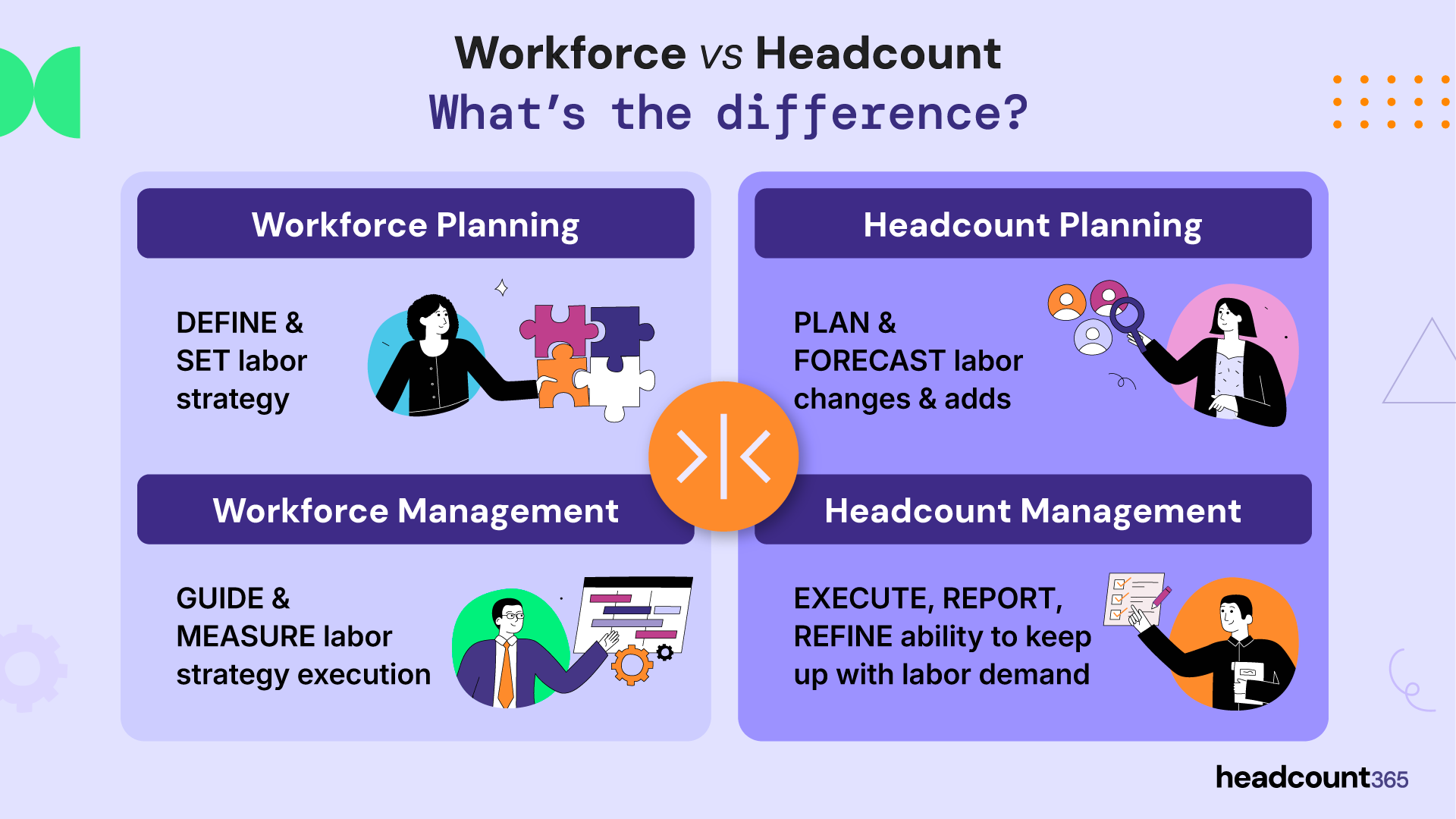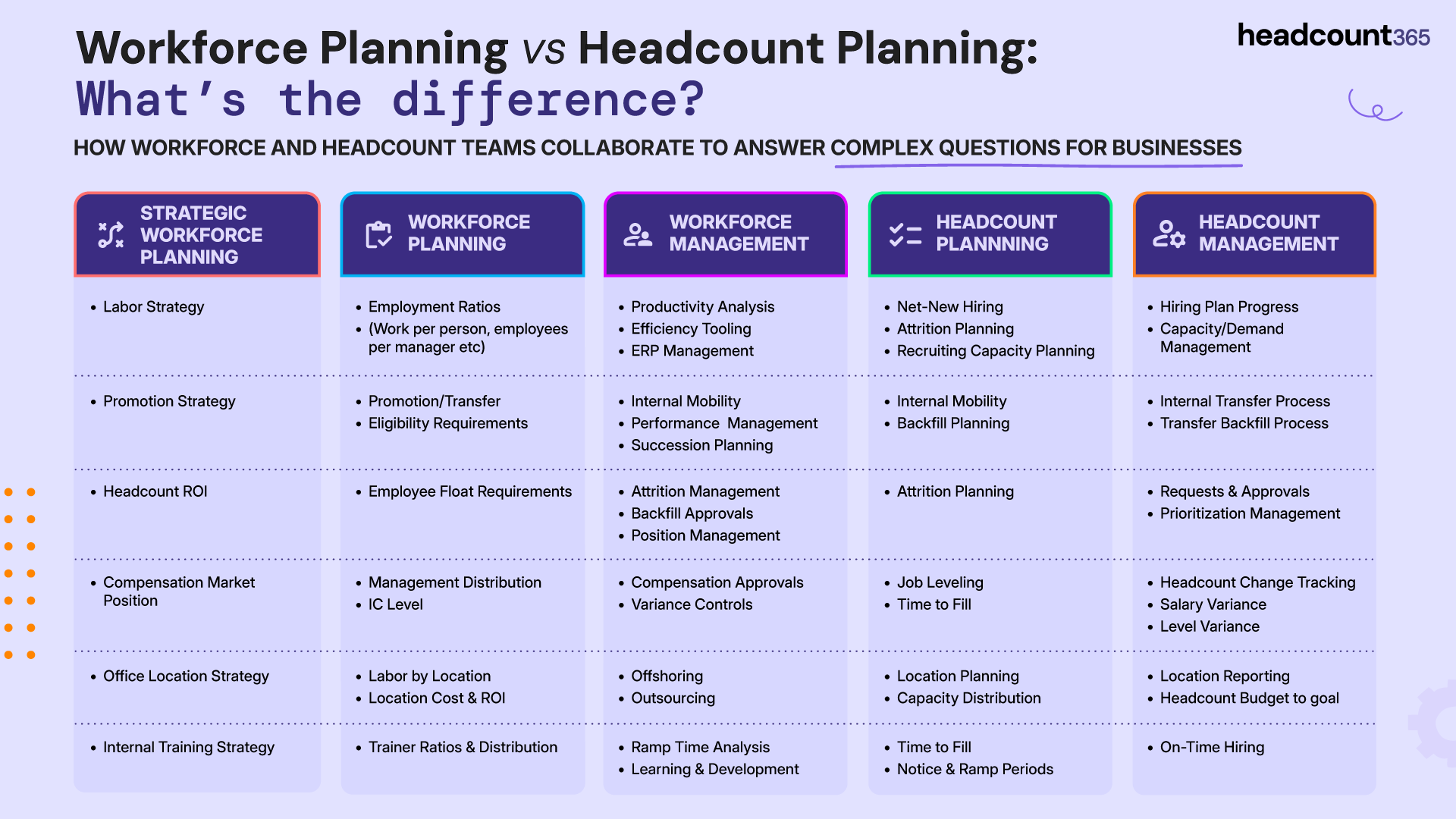Workforce Management vs Headcount Management
Table of Contents
What’s the difference between headcount management and workforce management?
Headcount & workforce are terms used interchangeably, but they are different processes, with various inputs, goals, stakeholders, and outputs. Every company has different requirements for each, further blurring the lines between the two. In this article, we’re going to add a bit of clarity to how these individual processes, and the overlap between them, are used to ensure companies have the right people in place to meet their goals.
Workforce Management Definitions
Workforce is about the distribution of labor across business demand. Not only are you matching employee skills to work, but you’re considering the context that makes that employee productive, feel valued, in an effort to maximize their return for the business. The dedicated team typically utilizes workforce management solutions to automate processes and ensure data accuracy.
Strategic Workforce Planning is the deep understanding of the inputs that may change the organizational makeup of the organization with evidence-based hypotheses on how strategic changes may impact the overall organization.
Workforce Planning is the creation or modification of your current workforce management strategy, using employee data and business results to deliver business efficiency and employee experience in a reliable way.
Workforce Management is the execution of key workforce management programs to increase the likelihood of materializing the workforce planning strategy into actual results.
We’ll explore these differences in our example below.
Headcount Management Definitions
Headcount is the practical application of workforce planning and management, expressed as a count of all employees, a sum of all salaries, and the relationship of adding and subtracting employees on the financial returns of the business.
Headcount Planning applies key workforce planning outputs, like management ratios or org structure, to understand how the number of employees needs to change to appropriately meet these goals.
Headcount Management is the tactical process of managing changes to the number of employees through hiring, attrition, and internal mobility.
Applying these concepts to solve a real problem
In this example, Workforce planning has analyzed the existing employee population, their tenure & performance, and the structure of the business to create the blueprint for how this company’s workforce will meet the demand of this business.
The workforce management stakeholders set key strategies that are used by headcount teams to execute the plan. These guidelines are the frameworks for approval processes in a workforce management system when people want to break or bend these rules. The number of requests, and the variance that's created informs the planning team of updates to the strategy.
Headcount planning is a shared effort, using the parameters set by the workforce teams to fill the gaps needed to meet the demand for new work, employee attrition, or changes in the market. Considerations about the time & effort it takes to get the right people ramped to the production needed is critical to meeting company goals. For a preview of the complexity of headcount planning, let’s look at the timeline to hire a new seller below.
The headcount planning team must factor in timelines like these: the capacity of the recruiting team, the availability of hiring teams who interview, the volume or scarcity of people who do the roles we’re asking, and historical data around candidate declines and attrition to make a plan for the number of headcount needed and when to start recruiting.
The tactical execution of all of these steps by hiring managers, FP&A, recruiters, and other stakeholders is headcount management. Requests, approvals, job postings, internal transfers, attrition, and promotions are all fundamental parts of managing headcount. These processes create variance data from the original workforce plan & strategy, covering everything from total headcount, compensation, timing, attrition, and many other factors.
A workforce management solution ensures that your data is not lost in spreadsheets
Today, this headcount management happens on spreadsheets, and the data created by these processes is lost in the spreadsheet shuffle. Headcount365 not only gives every stakeholder the workforce management system to control this process, but also the data from all the variances so that planning teams can learn from the activity of previous headcount plans. Machine learning and data science create exactness and predictability to the variance that’s expected, creating more accurate budget forecasts and higher producing revenue teams.



